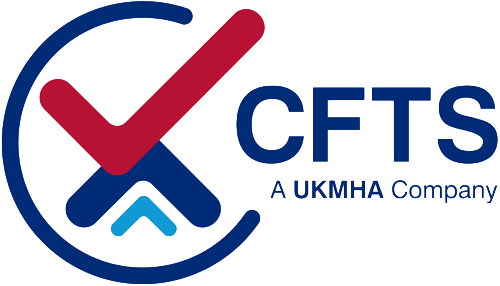Key changes announced to guidance on Thorough Examinations
30 July 2021
CFTS chairman advises employers to ensure they are up to date
Key changes have been announced in the latest update to the materials handling industry official guidance notes on how to comply with the legal obligations for Thorough Examinations.
Announcing the changes, Geoff Martin, chairman of leading accrediting body CFTS, said: “Although the laws for the Thorough Examination and Safety Inspection of equipment under LOLER and PUWER have not been changed, the industry guidance enshrined in GN28 has been significantly enhanced.
“Those responsible for overseeing handling operations will need to make sure they are up to date and familiarise themselves with those changes. They affect many different aspects of Thorough Examination as it applies to a wide range of equipment including counterbalance trucks, warehouse trucks, rough-terrain forklifts and variable-reach trucks (telehandlers).
Here are some of the key changes and clarifications in the new GN28:
- For lorry-mounted trucks where the operator can be lifted with the truck as part of the mount/dismount sequence, a Thorough Examination is necessary at least every 6 months (more frequently if conditions require, e.g., corrosive environments).
- Similarly, attachments not permanently mounted to the truck will also require examination at least every 6 months.
- In situations where an exceptional event has occurred – such as an impact or overload – an additional Thorough Examination is required before the equipment is brought back into service.
- If it is not possible to complete a Thorough Examination within the scheduled period, then the truck should be removed from service until the inspection can be satisfactorily completed.
- If the Competent Person carrying out the inspection is unable to complete a Thorough Examination due to a serious defect of the lifting parts, then they must inform the relevant enforcement authority.
- Where fitted, operator assistance systems, safety cut-offs and speed reductions must be working correctly.
- Creep of the load handling system should be assessed with a representative load and the hydraulic fluid at the normal working temperature. Where there is doubt further testing should be specified on the report of Thorough Examination.
- Parking brake performance can be verified by ensuring that it holds the truck stationary on the maximum operating site gradient when carrying a representative load.
- Where there is a defect or imminent failure in the lifting equipment involving a risk of serious injury, e.g., chain or fork wear beyond replacement limits, or a missing or defaced capacity/data plate, the examiner must send a copy of the report to the relevant enforcement authority as required by LOLER.
Mr Martin advised: “CFTS-accredited companies are unique in using procedures and documentation that are totally compliant with GN28 guidance so you can be confident your next Thorough Examination fully meets HSE requirements. If you are in any doubt about what is required in a Thorough Examination or want a better understanding of what the changes to GN28 may mean for your operations, contact your nearest CFTS-accredited examiner.”
